August 2012
Fifty paces ahead on the sidewalk, an arrow pointing to my left…in less than a minute I would finally be walking through the door to the RCIA* class and into the Catholic Church.
A mixture of anticipation and apprehension stirred inside me. After years of watching Catholicism play out on EWTN, of wondering if I could really become Catholic and of considering what it would mean for the rest of my life…I was officially on the journey.
Marcus Grodi, on EWTN’s The Journey Home show, each week traced the personal journeys of people just like me who had each walked through the door into the Catholic Church. Never  missing an episode, I had identified with each of his guests – their early lives, their prejudices against Catholicism, their faith questions, their loss of family and friends who could not deal with their new faith…and most definitely…with their peace and joy when at long last they walked toward the priest for their first reception of the Eucharist.
missing an episode, I had identified with each of his guests – their early lives, their prejudices against Catholicism, their faith questions, their loss of family and friends who could not deal with their new faith…and most definitely…with their peace and joy when at long last they walked toward the priest for their first reception of the Eucharist.
Emotionally embracing the Catholic faith, I had finally come to that place of peace…short of the final decision. And here I was walking up the sidewalk, the decision being sealed as I reached for the handle, pulled…and walked into the room.
The moment was transformational, a personal allegory, the first movement of the first petal on a rose opening to the world, a hint of the anticipated joy when I…not someone else on a television show…when I would be walking toward the priest in full communion with the Church.
Ahh…romantic notions don’t always play out so nicely.
I surveyed the large gym being used for our RCIA classroom. It seemed as if a sixth grade class complete with its desks and teacher podium had been carefully lowered through the roof, keeping the rows and aisles clearly defined in the middle of the big open space. I introduced myself to the woman who approached. She smiled, recognizing my name from her list, and handed me an enrollment page and class syllabus. “What sacraments do you want?” she asked.
I was caught up short. Could I really be so unprepared for becoming Catholic? What did she mean? Marriage? I was already married. Communion (I should remember to call it the Eucharist)? Well…doesn’t everyone want that? Anointing of the sick? What the heck does that have to do with entering the church? I did the only thing I could think of to avoid a long discussion at the door. “I don’t know. What sacraments are there?”
 “That’s OK,” she said. “We will go over that in class.” I walked toward the desks and chose a seat in the middle of the room.
“That’s OK,” she said. “We will go over that in class.” I walked toward the desks and chose a seat in the middle of the room.
As people joined the group, we worked to fill out our enrollments. The leader had by this time discerned the need for her to help us out. “There are seven sacraments,” she explained. It took only two minutes for her to list and explain them.
If this was a precursor of things to come, I was in a lot of trouble. The form required the kind of details I have never been good at…and for that reason…details that I have never much cared to deal with. How old am I? Every time…I have to subtract 1951 from the current year. What anniversary are my husband and I celebrating? I have to go to the file cabinet, pull out our marriage certificate and do another subtraction problem. If not careful, we may pass by our golden wedding anniversary without even knowing it.
The enrollment form had it all…questions about things I did know…how  many times have I been married? One. How long have we been married? (Well, fewer than 50 years but more than 30…I think.)
many times have I been married? One. How long have we been married? (Well, fewer than 50 years but more than 30…I think.)
And questions I knew nothing about…date of my confirmation…sponsor of my confirmation…place of baptism…and date….
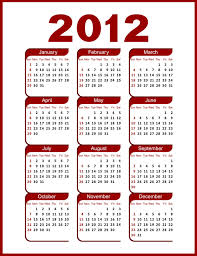 Well, this was September. The class ran weekly through next March. Seven months. I had time to figure it all out.
Well, this was September. The class ran weekly through next March. Seven months. I had time to figure it all out.
Things did not get easier.
The leader went to the podium, pulled out the syllabus and began running down all the requirements for the class. We would have to buy a copy of the Catholic Catechism. Her assistant held up a red book. I was ready to check that off my list. My green copy of the Catechism of the Catholic Church, 2nd Ed., published by the Vatican 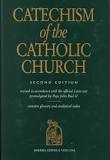 Press was clearly legit…even if it was green instead of red…one of those unnecessary details I wouldn’t let concern me.
Press was clearly legit…even if it was green instead of red…one of those unnecessary details I wouldn’t let concern me.
As people began asking questions about the book and its cost, the leader addressed the green/red issue. My book was the official Vatican Catechism. The class copy – required – was the revision made by the U.S. Council of Bishops…another $20 book on my shelf.
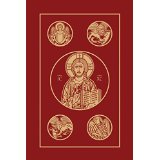 The assistant held up a copy of the wine colored Ignatius Catholic Bible required for the class. Wine? Check. My Bible matches this time. I just saved myself $20.
The assistant held up a copy of the wine colored Ignatius Catholic Bible required for the class. Wine? Check. My Bible matches this time. I just saved myself $20.
But things were adding up fast: $60 cost for the class, $40 for books and $80 for a required Cursillo retreat in November.
 The lady to my left on the other side of the aisle raised her hand. “I’ve got a King James Bible. [KJV]” The leader was insistent…the KJV version wouldn’t work. “But what’s the difference. I have a Bible.” I waited for the leader to help the lady understand the distinctions between the two versions of the Bible.
The lady to my left on the other side of the aisle raised her hand. “I’ve got a King James Bible. [KJV]” The leader was insistent…the KJV version wouldn’t work. “But what’s the difference. I have a Bible.” I waited for the leader to help the lady understand the distinctions between the two versions of the Bible.
“They’re not the same. They are different.” In frustration, a man in the front row turned around and said loudly he would pay for the her Bible. Tension was building in the room.
I wanted to lean over and reassure her of the validity of both her Bible and her question. I sat in the middle of a room clearly divided into two groups representing the parish. On my left, tattooed men and women were dressed in work jeans and shirts. On my right, people were in button down shirts, dress slacks and dresses. While the man had offered to cover the $20, she still had $160 left to worry about, even if the leader had said people could break it down into payments. And, while he intended his offer out of kindness, for the person publicly identified as “too poor to afford a Bible,” kindness is not much better than condescension.
Maybe my failure to appreciate details was finally catching up with me. Did it mean I might not have what it takes to be Catholic? I just couldn’t figure out why her KJV was illegitimate in its totality. I kept waiting to see Christian charity modeled by the leader, “Sure. You can use your KJV, and we will help you with the other additions from the Catholic Bible. Just check with me after the class.”
Things did not improve. Marching down the syllabus, our leader picked up speed.
speed.
“You will need a sponsor.”
“What is that? I don’t know anyone. What do they do?” Looks of concern and confusion clouded faces as questions popped up randomly from around the room.
“![]() Don’t worry about that. We’ll talk about it in another class. If you can’t find one, we will find one. Let’s move on. You will need to choose a saint.”
Don’t worry about that. We’ll talk about it in another class. If you can’t find one, we will find one. Let’s move on. You will need to choose a saint.”
“What is that?” More clouded faces and popping questions. “How do we do that? I don’t know any saints. How do we know which saint to choose?”
“Don’t worry about that. We’ll talk about it in another class. We will help you. Let’s move on. I’m passing around a page. Make sure you get one. Each week you will need to write down one charitable deed you did for each day and turn this page in to me when you come to class.”
“What…what…what…?” The questions were moving quickly from lack of understanding about how to do the assignments to lack of understanding for why.
“Don’t worry. It’s not that hard. You don’t have to make it difficult…like mowing someone’s yard. It can be as simple as smiling at someone. That is a charitable act…and that is part of being Catholic. I won’t be grading them.”
My mind wandered away from the discussion of charitable deeds in order to deal with more pragmatic and personal questions.
This was the beginning of weekly classes from September through to March 31, Easter. 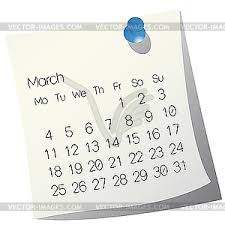 While I now knew which of the seven sacraments I needed, that had become secondary to the question of whether or not it made sense to complete the class. After all, my husband was not at peace with the whole Catholic/Protestant division. Considering our marriage as a vocation, and validated by a woman on The Journey Home who had lived my situation, I knew I would not formally join the church until my husband reached personal peace about the change. He didn’t have to become Catholic himself, but it was important that he be at peace with my decision. There was no sign that this would come by Easter. Maybe RCIA could wait for another year…and another class.
While I now knew which of the seven sacraments I needed, that had become secondary to the question of whether or not it made sense to complete the class. After all, my husband was not at peace with the whole Catholic/Protestant division. Considering our marriage as a vocation, and validated by a woman on The Journey Home who had lived my situation, I knew I would not formally join the church until my husband reached personal peace about the change. He didn’t have to become Catholic himself, but it was important that he be at peace with my decision. There was no sign that this would come by Easter. Maybe RCIA could wait for another year…and another class.
I mentally re-entered the world. Time for the class being short, the leader took the last few minutes to go around the room, all of the students and leaders giving a brief statement of who we were and why we were in the class…did we want to become Catholic and why?
A prayer was offered. Cookies were on the back table.
I walked back to the leader and thanked her for the class, explaining that, now knowing what the RCIA process was like, it might be more appropriate for me to wait and take the class when I knew for certain that I would be able to enter the church at the end.
As I walked through the door, back into my former world, my mind was churning, 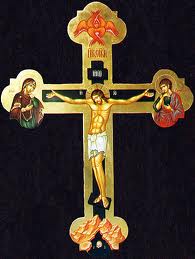 my heart was pumping, and my eyes were burning. “Wow.” And I exhaled as slowly as possible.
my heart was pumping, and my eyes were burning. “Wow.” And I exhaled as slowly as possible.
___________
*RCIA: Rite of Catholic Initiation for Adults, the educational class, teaching the basic doctrines of Christianity and the Catholic Church, preparing adults (catechumens) to enter the Roman Catholic Church. In current practice, the class meets weekly beginning in the fall and culminates 7 to 8 months later at Easter Vigil Mass of the following spring with entrance for the catechumens into the Church.
********************************
NEXT: DEAR DEBORAH, Page 1 – RCIA v1.1
Copyright, 2014. All Rights Reserved.




 Now…this is not what you think. I am not trying to retaliate. I have no desire to hurt anyone. And, yes,
Now…this is not what you think. I am not trying to retaliate. I have no desire to hurt anyone. And, yes, 